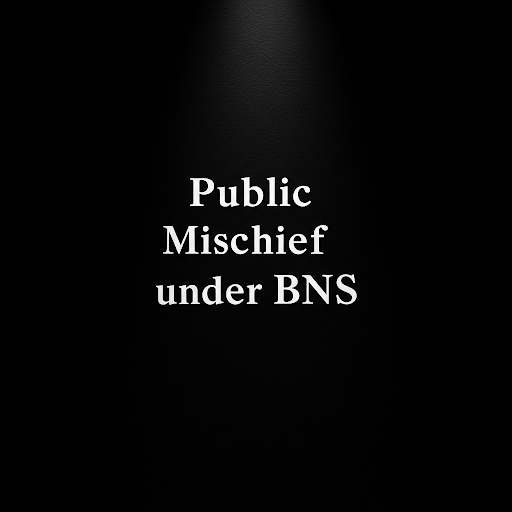This Article is written by AISHWARYA SURESH CHOUGULE, V BA LLB, Law student at KLE SOCIETY’S LAW COLLEGE, CHIKODI. The article explains the difference between cognizable and Non Cognizable offence under BNSS thoroughly.
Introduction
The offences in the field of law and criminal justice are categorized based on their nature, severity, character, and also the processes used in their investigation and trial. The two key classifications are cognizable offences and non-cognizable offences under BNSS.
It is essential for understanding the key differences between these two categories for comprehending the legal procedures and the powers of law enforcement agencies. There are various differences, advantages, disadvantages, and similarities between cognizable offences and non-cognizable offences. The degrees of involvement of police, procedure of arrest as well as the legal process are all influenced by these classifications.
What is cognizable offence under BNSS ?
A cognizable offense is an offence or crime where a police officer can investigate and arrest the accused without a warrant. These Cognizable offenses are usually serious in nature and can also result in a sentence of three years or more.
Such offences include Murder, rape, dowry death, waging war against the state, etc. These offences undermine the peace and harmony of society.
Definition of cognizable offence under BNSS.
According to Section 2(g) of the Bharatiya Nagarik Suraksha Sanhita, 2023, a cognizable offence is one for which a police officer has the authority to make an arrest without a warrant and commence an investigation with or without permission of a court.
Essentials of cognizable offence
Serious Nature: offences must always be serious in nature, and should include the acts like murder, theft, or assault etc. And such crimes should have the direct impact on the safety and well-being of the community.
Immediate Arrest: when such offence has been committed, the police have all the authority to arrest the accused without any requirement of a warrant. Because these crimes are serious and pose a risk to public safety.
Police Investigation: Due to such crimes of serious nature, the police i.e. the law enforcement agencies can start their investigation independently without any requirement of magistrate’s permission to investigate the case.
Legal Proceedings: The cases that involve the cognizable offences tend to progress faster through the criminal justice system. This ensures that the accused can face legal consequences if found guilty, protecting society from further harm.
Provisions related to cognizable offences under BNSS
Information in cognizable offences. Section 173
The BNSS provides for the e- FIR means electronic FIR through electronic means as well as the orally. It has also provided for the concept of zero fir. The behind this concept is to avoid the delay regarding the registration of complaint. It is most probably beneficial for the victims because police officers are obligated to record the initial information irrespective of the territorial jurisdiction.
When information relating to the commission of any cognizable offence which is made punishable for three years or more but less than seven years after considering the nature and gravity of the offence the officer in-charge of the police station may with the prior permission from an officer but not below the rank of Deputy Superintendent of Police, shall , firstly proceed to conduct preliminary enquiry to ascertain whether there exists a prima facie case for proceeding in the matter within a period of fourteen days or secondly proceed with the investigation when there is prima facie case.
Police officer’s power to investigate cognizable case – Section 175
The officer who is the in charge of a police station may directly investigate any case which is cognizable within its jurisdiction. But if the nature of the crime is serious, the Superintendent of Police (SP) may make the investigation and can also assign it to the Deputy Superintendent of Police. And the Cognizance regarding the complaint against a public servant in the course of their official duties may be taken by magistrate under section 210, only after, receiving a report from a superior officer detailing the facts and circumstances of the incident and after considering the public servant’s explanation regarding the situation that led to the incident
Advantages
- It allows for immediate response from in serious criminal cases by law enforcement agencies.
- It helps in the prevention of further harm or danger.
- It facilitates thorough investigations due to the involvement of the police.
- It gives a sense of a sense of security to the public
- It Provides a solid legal framework to hold perpetrators accountable for their actions.
- It builds public trust and confidence in the criminal justice system.
Disadvantages
- There might be misuse or abuse of power by law enforcement agencies in registering or investigating cognizable offences.
- It can also cause delays or inefficiencies in the investigation process.
- It can also lead to the detention of innocent individuals during the investigation phase.
- It may over look or neglect non-cognizable offences.
- There is Limited flexibility in the investigation process.
What is non cognizable offence under BNSS ?
A non-cognizable offence is an offence which refers to a act committed by an individual which is generally less serious in nature. In These offences the investigating authority cannot arrest an accused without an arrest warrant.
Such offences include abusing each other, minor scuffles without injuries, intimidation, etc.
Definition according to BNSS.
According to Section 2(o) of the Bharatiya Nagarik Suraksha Sanhita, 2023, require police officers to obtain a warrant for arrest and court permission to initiate an investigation. The Police require court permission for arrest.
Essentials of non cognizable offence under BNSS
Less serious nature: An offence should be of less serious in nature. There should not be major threat to society. Defamation, nuisance , cheating comes under it.
Arrest warrant: Police officer must have valid arrest warrant to arrest any person who is committing non cognizable offence. Such warrant should be issued by the judicial magistrate.
Police investigation: Police should conduct the investigation once the issue is brought before judicial magistrate and after investigation they are requires to prepare several reports which should be submitted before appropriate court. The reports submitted to be are preliminary and final reports.
Legal proceedings: When a person is convicted for the offence of non cognizable offence by the court then arrest warrant has to be issued. This can be done once the decision has been passed by court.
Provisions related to cognizable offences under BNSS
Information as to non cognizable cases and investigation of such cases – Section 174
If anyone gives a report regarding a non-cognizable, then the police must record the details in a register kept by such officer, must refer the informant to the Magistrate for further action. And must send a daily diary report of all such cases to the Magistrate every 15 days.
The police cannot investigate a non-cognizable offence without approval or permission from the Magistrate. When the Magistrate gives permission, the police can investigate using all normal powers except arresting without a warrant. But if any of the case includes at least one of the cognizable offences, then the entire case will be treated as a cognizable case/cognizable offence, then the police can investigate such offence/case without separate permission.
Advantages
- It allows the resolution of through compromise or reconciliation of less serious criminal cases
- It also helps to reduce the burden on law enforcement agencies.
- It has flexibility in the investigation process due to the necessity of court’s permission.
- By addressing minor offences it promotes the efficient use of judicial resources.
- Individuals accused of non-cognizable offences gets opportunity to present their case and defend themselves before the court.
Disadvantages.
- There is the Possibility of delays or inefficiencies in the investigation process, as it requires the court permission.
- The involvement of the police is limited in non-cognizable offence.
- Due to court intervention may result in longer resolution times compared to cognizable offences.
- Possibility of conflicts during the negotiation or compromise process.
- If parties are not willing to engage in compromise or reconciliation there is risk of compromised justice.
Key Differences between Cognizable and Non-Cognizable Offences under
Here’s the differences between cognizable and non-cognizable offences under BNSS in India:
| Aspect | Cognizable Offence | Non-Cognizable Offence |
| Definition | In this, police can arrest without a warrant. | In this, police cannot arrest without a warrant from a court. |
| Legal Authority | Police have the authority to start an investigation without a court order. | Police require permission from a magistrate to begin an investigation. |
| Examples | Murder, rape, robbery, theft, etc. | Forgery, cheating, assault, defamation, etc. |
| Severity of Punishment | Usually severe, potentially life imprisonment or death. | Less severe, often less than three years of imprisonment. |
| Arrest Procedure | Immediate arrest possible without prior judicial approval. | Arrest can be done only with a warrant issued by a magistrate. |
| Investigation | Police can conduct the investigation immediately upon registering an FIR. | Investigation only after magistrate’s approval. |
| FIR (First Information Report) | Mandatory and can be filed by the police on receiving knowledge of the commission of the offence. | a police diary entry is made and a formal complaint must be submitted to a magistrate. |
| Preventive Action | Swift action possible due to the serious nature of the crimes. | It is a Slow process because of the requirement of warrants and permissions. |
| Public and Media Attention | Typically high due to the gravity of the offences. | Comparatively lower unless the case gains specific interest. |
| Judicial Oversight | Less immediate oversight in the initial stages. | High degree oversight from the initiation of the process. |
| Bail | Generally non-bailable; requires court intervention for bail. | Typically bailable directly at the police station. |
Conclusion.
Cognizable and non-cognizable offences are important to understand. It is essential for fostering a law-abiding society where justice is not only done but is seen to be done. The differences between them show the flexibility to the severity of the crime. Both represent the distinct categories within the legal framework.
References
- https://lawbhoomi.com/difference-between-cognizable-and-non-cognizable-offences-in-india/
- https://testbook.com/key-differences/difference-between-cognizable-and-non-cognizable-offence
- https://www.mha.gov.in/sites/default/files/2024-04/250884_2_english_01042024.pdf













